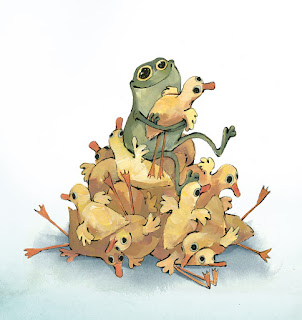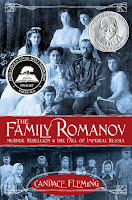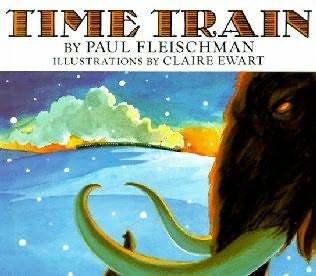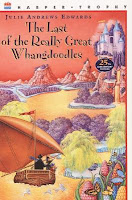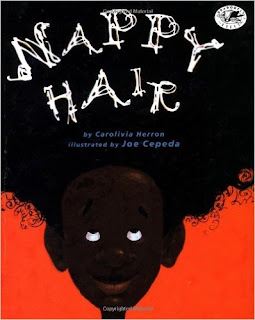new posts in all blogs
Viewing: Blog Posts Tagged with: #LA15SCBWI, Most Recent at Top [Help]
Results 1 - 25 of 72
How to use this Page
You are viewing the most recent posts tagged with the words: #LA15SCBWI in the JacketFlap blog reader. What is a tag? Think of a tag as a keyword or category label. Tags can both help you find posts on JacketFlap.com as well as provide an easy way for you to "remember" and classify posts for later recall. Try adding a tag yourself by clicking "Add a tag" below a post's header. Scroll down through the list of Recent Posts in the left column and click on a post title that sounds interesting. You can view all posts from a specific blog by clicking the Blog name in the right column, or you can click a 'More Posts from this Blog' link in any individual post.
 |
| From left to right: Lee Wind, Martha Brockenbrough, Jolie Stekly, Jaime Temairik and Don Tate |
From all of us at SCBWI Team Blog, thanks for following along!
We hope you'll join us for the 17th Annual SCBWI Winter Conference in New York City, February 12-14, 2016.
Featuring:
Full-day intensives for both writers and illustrators,
The juried portfolio showcase with Grand Prize,
The opportunity to network with top editors, agents and publishers
Workshops,
Keynotes
and much more!
Craft. Business. Inspiration. Opportunity. Community.
We're
your SCBWI.
.jpeg?picon=2287)
By: Lee Wind, M.Ed.,
on 8/2/2015
Blog:
The Official SCBWI 10th Annual New York Conference Blog
(
Login to Add to MyJacketFlap)
JacketFlap tags:
Meridth Gimbel,
Anne Berry,
#LA15SCBWI,
Illustrator mentees,
K-Fai Steele,
Kisoo Chai,
Molly Ruttan,
Nicholas Hong,
Add a tag
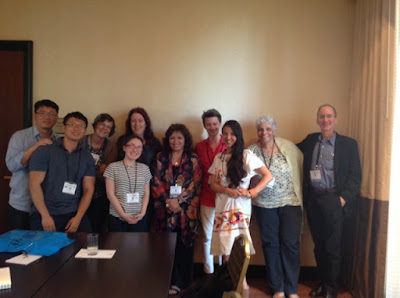 |
| The mentors and mentees |
Hand picked from the portfolios submitted for review at this summer's conference, these illustrators are clearly up-and-coming! Here's examples of their work along with links to their websites:
and
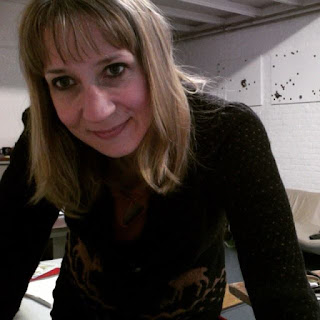 |
| Rachelle Meyer |
Rachelle wrote this about herself:Rachelle Meyer was born in the state of Texas and spent most of her childhood with her nose in a book. Reading became the wellspring for her continuing passions in life: drawing, storytelling and traveling. She graduated with a degree in Studio Art from the University of Texas at Austin and then spent eight years in New York City working as a graphic artist and designer. She has since moved to Europe and launched a successful career as an illustrator, specializing in children's books and editorial interpretations. Her talents have been used to interpret the work of contemporary best-selling authors such as Dave Eggers (A Heartbreaking Work of Staggering Genius), Audrey Niffenegger (The Time Traveler's Wife) and Nick Ortner (The Tapping Solution). She also writes and illustrates her own picture books and graphic novels. She volunteers as the International Illustrator Coordinator for SCBWI. She now lives in Amsterdam with her English husband, her Dutch son, and her cranky old New York cat.
You can visit Rachelle online at her website
http://www.rachellemeyer.com/and check out more of her sketches on instagram
https://instagram.com/rachellemeyer/One of Rachelle's illustrated books:
Some finished art:
One of the coolest things about attending the SCBWI Summer Conference is that when you're wowed by a faculty member's breakout session – if you time it right – you can go to their other session as well. To dig deeper. To learn more.
So, after being wowed by Jordan's breakout session on Voice, I attended (and here blog) his second breakout session, on Revision...
Jordan Brown is an executive editor with the imprints Walden Pond Press and Balzer + Bray at HarperCollins Children's Books.
The room is packed, every seat filled, people sitting on the floor.
Jordan starts us out the way he starts out when creating an editorial letter for a book he's editing. He aims to define the
core of the manuscript.
The core is three important qualities:
1. A central element of the story to which all readers can ideally relate - the universal.
2. What is the most formative experience of your young character's life? That's what your book should be about.
3. Something your character chooses, or has agency.
He illustrates the
core of the manuscript with Suzanne Collins' "The Hunger Games":
1. The concept is survival.
2. The most formative experience of Katniss's life is being in the Hunger Games.
3. It's her choice. She volunteers to save her sister.
It's these core concepts that Jordan uses to ground his revision notes, to make sure he and the author share a vision of what the book is.
He walks us through his five principles of revision. I'll share one of them.
Character Drives PlotYou want your plot to ask the right questions of your character:
1. What does my character want?
2. What are the stakes for my character? What happens if she doesn't get what she wants?
3. What complicates things. Why can't the character get what they want?
As full as the room is, Jordan's speech is still
more full of great content, tips and examples. He ends with his explaining how to know if your book is ready... or if it's not ready.
A final note:
Jordan reminds us that our manuscripts don't have to be perfect, that
"As editors, we're not acquiring your pages. We're acquiring the vision they represent."
And revision is the way to get our books to match our vision.
We Need Diverse Books™team members Miranda Paul and Nicola Yoon presented an enormously informational session on writing outside of your own diversity. Paul, who is married to a black African man, wished for more books featuring characters that looked like her biracial family—particularly when her daugher questioned why so many books featuring characters that looked like her were about slavery. Yoon also comes from a biracial family and shared her concern. Here are a few things to think about when writing outside of your own race, background, experience:
• Honest Reflection. Consider your own motivations, biases, ignorances for writing a particular story. What is your connection to the topic?
• Collaborate
Identity experts with whom you might work with or co-author a book. They can help you to realize things you didn't realize you don't know.
• Observe
Make research trips, take notes, watch, listen (Cavet: You are still an outsider at this phase)
•Recognize
Be honest with your reader, explain literary choices, share your research process, extend beyond the book
• Tell the truth
Write characters, not caricatures. If you’re writing a stereotype, you’re not telling the truth. All Asians are not good with math. All black girls aren’t sassy. People are complicated, create complex characters. Know what makes your character tick— What do they love? What do they want
• Diversify your life
Include more types of people in your own life, it will not only make you a better writer, it will make you a better person.
Michelle Knudsen is a New York Times best-selling author of more than 40 books for young readers, including the picture book Library Lion (illustrated by Kevin Hawkes), the middle-grade fantasy novels The Dragon of Trelian and The Princess of Trelian, and the young adult novel Evil Librarian.
This book earned her the 2015 Sid Fleischman Award for Humor.
"For writers of humorous fiction, life is a tough room," Paul Fleischman said in presenting the award. "Sense of humor varies as wildly as taste in food."
He called Michelle's book a "frothy delight" that has entranced readers. And then he presented her with a set of keys to an alternate universe where humor is as respected as it should be.
She spoke of how much it meant to her to hear from former Sid Fleischman Award winner Alan Silberberg, who reassured her she didn't need to be funny onstage (she was, though—wonderfully so).
When she started EVIL LIBRARIAN it was as a break from another book, and she didn't know it would be funny. "Once I realized I had the start of a story that was funny, I started to panic that it had to be funny all the way through."
Her mentor Tim Wynne Jones told her to stop trying to think about being funny, and just to write the story, which is about friendships and musical theater and demons (and an evil librarian).
Michelle expressed thanks to the SCBWI and a large crew of supportive family, friends, and professional colleagues—as well as to Stephen Sondheim and his hilarious disturbing musical "Sweeney Todd."
Bonnie Bader announces the winners of this year's Student Writer Scholarship, a grant of conference tuition for full-time university students in an English or Creative Writing program.
For undergraduate: Katherine Kendall from Brigham Young University, for her YA fantasy thriller
and
for graduate: Courtney Warren from the MFA program at Hollins University, for her MG novel set in 1955 Mississippi Delta.
Bonnie has the winners stand, and the room enthusiastically applauds.
Congratulations, Katherine and Courtney!
Our lovely and fantastic
Melissa Sweet, author and illustrator of many award-winning picture books, is here accepting the Golden Kite for her illustrations of Peter Mark Roget's life and world in
The Right Word: Roget and his Thesaurus.
The research for this book began not far from here in Santa Barbara, where Melissa got to see one of Roget's original word books in a private collection. Melissa has illustrated word-centric biographies before, but unlike being able to pull from the imagery evoked in the words of William Carlos Williams, Melissa had to figure out how to visualize Roget's lists of words.
For the better part of two weeks, Melissa handlettered Roget's original word list in sepia and had a jolly old time doing it.
 |
Melissa got to handle original Roget pages
like these—without gloves! |
Melissa thanks her publisher Eerdmans Books for Young Readers, her author Jen Bryant, and the SCBWI/Golden Kite committee.
"My hope with this book is that readers will be delighted and informed, but most importantly, always find the right word when they need it."
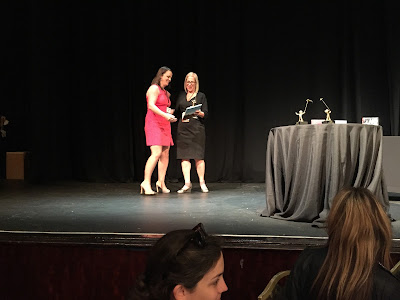 |
| Kristy Dempsey (left) accepts her Golden Kite Statuette from SCBWI's Sara Rutenberg |
A Dance Like Starlight: One Ballerina's Dream is beautiful.
In her acceptance speech, Kristy speaks of joining SCBWI in 2005. Of the connections and community, "kite dreams, if you will" that have helped her on the journey so far.
Moments of her speech that touched and resonated:
"...deep joy is only found in fulfilling our purpose."
and
"I write to discover my own empathy. Or perhaps, more honestly, to work my way toward it."
Congratulations, Kristy!
The Emerging Voices Award was established with funding from Martin and Sue Schmitt of the 455 Foundation to foster the emergence of diverse voices in children’s books.
This year's winners are Heidi Kim and Adria Quinones...
Congratulations!
Honor Awards go to:
Amy Heron (send us your website link!)
and
and the
Grand
Prize
Winner
IS
.
.
.
Congratulations, Illustrators!
Stage... set
Tables... filled
Forks... poised.
Candace Fleming is a true youth literature rock star. She is the author of over thirty-two books for children—picture books, middle grade fiction, and biographies. Her most recent book,
The Family Romanov, is the 2015 SCBWI Golden Kite winner for Nonfiction.
In her breakout session today, she offered some tips for writing great narrative fiction (longer pieces of work, middle grade, YA):
1. Vital idea. Consider what it is that you have to say with your story, and not just the facts. As writers, we are storytellers (or bakers, as Fleming used a great metaphor to illustrate the concept). Writing is like baking so create a great cake—bake a great piece of fiction.
What do you want to tell your readers? What are you showing them about their current world? What do you want to add to the conversation? Fleming used her book,
The Family Romanov, as an example of what happened when people of power didn't pay attention to their job of focusing on the people.
It was her personal opinion, but that's okay, "insert your bias, make a statemen" she said.
Think in scenes and bridges. All nonfiction is written in scenes connected by bridges (or summary). A scene shows the reader what is happening, while a bridge adds context and helps the reader understand and push the story forward. Bridges help the reader know what they need to know in order to understand the next scene. Scenes should be dramatic, as should all nonfiction.
 |
@mbrockenbrough is Martha's
Twitter handle. Magnum Blackbeard
is her CB radio handle. |
Author
Martha Brockenbrough shares some fantastic and salient social media marketing gems. Spoiler alert: It's all about relationships!
Your strategy for social media, says Martha, is not to be on there to sell books, it's to build relationships. It is not about the technology/particular media platform, either, that is totally secondary to the connections you make on whatever platform you are comfortable being in or on.
You wouldn't start an in-real-life friendship by telling someone to buy your book, that's not how you should approach social media either. It's fine to make people aware that you write or illustrate, but Martha's hope is that you instead focus your efforts on being friendly, interacting online, and adding something to the conversations.
Give them reasons to interact with you: you can show snippets of your life, your family, vacations, things that inspire you.
Who are you building these social media relationships with? Five-year-olds don't tweet, but booksellers, librarians, teachers and parents do! All of these people are potential gatekeepers to your intended audience of your published book.
If you aren't published? Well, your fellow industry professionals, fellow authors and illustrators and agents and editors are on social media, and you can start building these relationships now and support authors and illustrators you are fans of and herald their work.
Martha's Core Principles for Online Social Media (and Martha can do an 8-minute plank, so she knows about core strength)
1. Be Positive
2. Focus on the long term
3. Build an authentic community (Martha admits it is difficult to be careful and professional while also being authentic, but hold both of these things in mind when you do broadcast yourself/opinions online)
Martha provides some platform-tailored tips and hints for how to interact on Facebook, Twitter, Linked In, and more, for both your personal and professional pages.
One Facebook hint: Images are often more popular than text-only posts for views and shares, consider making a quote from your book or a new, glowing review you want to share as word art or an image. Or consider using pictures to promote your event, like one of Martha's most popular booktour event info posts was this one:
See some great social media in action by using Martha as a case study:
Paul Fleischman's novels, poetry, picture books, and nonfiction are known for their breadth, innovation, and lyrical language. He's won the Newbery Medal for Joyful Noise: Poems for Two Voices, a Newbery Honor for Graven Images, the California Young Reader Medal for Weslandia, and was a National Book Award finalist for Breakout. His book Seedfolks has been used in citywide reads across the country. In 2012 he was the United States' nominee for the Hans Christian Andersen Award for the body of his work. Visit www.paulfleischman.net.
Paul has written wordless books and he's written an opera, but he always comes back to picture books.
He touches on length, age level, and how picture books are mediated by an adult and what that means – and doesn't mean – in terms of vocabulary and subject matter.
"The best picture books can be enjoyed by all ages."
Models to consider: ballads, songs, lyrics - and how they leave out a lot.
"Does your idea require art? If you can imagine your story without art, a picture book might not be the way to tell it."
"Weigh every word." And then he adds that that is "good advice for all genres."
And when he has things that happen in his story that aren't in the text? Like the moment in his own "Time Train" when the text says, "some passengers got on in Pittsburgh" but it's Civil War Soldiers who are walking into the train car?
He puts it in brackets. (But urges us to keep them to a minimum, "just what is required.")
Paul finishes the session with questions, and his answers cover so much more.
 Brandy Colbert is the author of POINTE, winner of the 2014 Cybils Award for young adult fiction, and was named book of 2014 by Publishers Weekly. Her next book LITTLE & LION will be published by Little, Brown in spring 2017.
Brandy Colbert is the author of POINTE, winner of the 2014 Cybils Award for young adult fiction, and was named book of 2014 by Publishers Weekly. Her next book LITTLE & LION will be published by Little, Brown in spring 2017.
POINTE was the fourth novel Brandy wrote. She knew it was almost there because she really started caring about the characters.
It really helps to create a backstory for your supporting characters, though you don't need as much as you have for your main character, but they too need a story. Be careful of stereotype with your supporting characters.
Watching TV is a great way to learn about great dialogue. While watching it's helpful to assess what people do with their hands and body language. Also, close your eyes and listen to what their voice alone sounds like.
Do your characters use certain words or slang (but also be careful of these)?
Empathy is huge. Give readers a reason to care about your characters.
What Brandy worked on most when writing POINTE: detail, detail, detail, and body language. She wanted to allow the reader to imagine the characters as much as possible without giving to much detail, but Brandy's editor was often asking: Where is she? and Where are you characters on the page? She had to work on this.
Supporting characters Brandy loves (from contemporary, realistic):
The Best Friend
A Sense of the Infinite by Hilary T. Smith
Love Interest
Roomies by Sara Zarr and Tara Altebrando
Nothing Like You by Lauren Strasnick
Siblings
P.S. Be Eleven by Rita Williams-Garcia
Making Pretty by Corey Ann Haydu
Big Groups
The Walls Around Us by Nova Ren Suma
This Is Not a Test by Courtney Summers
Characters That Don't Appear on the Page
Hold Still by Nina LaCour
Parents
Since You Asked by Maurene Goo
Shannon Hale is the
New York Times best-selling author of fifteen children's and young adult novels, including the popular Ever After High trilogy and multiple award winners
The Goose Girl,
Book of Thousand Days, and Newbery Honor recipient
Princess Academy.
Even as a little girl, Shannon was aware of gender and that girls were treated differently than boys.
Messages girls hear growing up: marry rich; boys are smarter than girls; your value is in your looks; even the things women are supposed to best at, men are better. These are the things Shannon had mulling inside her.
Shannon just unraveled a string of her rejection letters across the entire ballroom stage!
When THE GOOSE GIRLS came out, there was the assumption that boys do not read books about girls, so Shannon believed she wrote books that boys would never read.
When Shannon wrote RIVER OF SECRETS with a male protagonist, boys still did not read the book because she was woman.

If Shannon knew what a big deal the PRINCESS ACADEMY title would be, she wouldn't have title it that.
(Note: Shannon has the room clapping and cracking up!)
A teacher once told Shannon: "When I tell I class I'm going to read the
Princess Academy, the girls go ________, and the boys go___________." (Just like the room could here, you can fill in the sounds made by the girls and boys.)
Shannon asks the boys: Boys, why are you so scared of princesses?
She asks the girls a long list of questions about choices they can make (Can you wear blue? Can you wear pink? Can you be a race car driver? Can you be a clothing designer?) Then asks the boys: Who told you can only do half the stuff?
Shannon tell us, women have half the audience. It's how it is. We have labeled book by and about girls for girls, and girls only.
Shannon has a collection of great slides, showing that you can't get cooties from reading PRINCESS ACADEMY. This all started with Jon Scieszka. Love it!
Men as mentors is so critical. A boy who loves reading turns to his dad and asks, "Dad do you like to read?" Dad answers, "No, not really." Boy responds, "Me neither."
Are you giving books about girls to boys, and saying, "I think you'll like this book because it's funny, etc." We need to do this. We must!
Reading novels creates empathy. We are asking boys to live in a world that is 50% female while telling them not to read books about them. This needs to change.
A
must-read post about the time Shannon spoke at a school and the boys were not invited.
 |
| Susan Eaddy |
Susan wrote this about herself:Susan Eaddy and begins work every day with clean hands. Within 15 minutes those hands are bright green, or purple, and covered in clay! Each illustration is a discovery process as she studies nature and animals to figure out how to bring them to life in clay. Her clay critters inhabit pizza boxes in her attic studio and she’s pretty sure they play at night while the humans sleep. She loves to travel and has done school visits all over the world from Alabama to Taiwan to Brazil to Hong Kong!
She is the Illustrator Coordinator for the Midsouth and a member of the SCBWI Team Bologna.
You can find out more about Susan (and check out more of her art) at
www.susaneaddy.comHere's the cover of a picture book she illustrated (with clay!):
Stephen Fraser joined The Jennifer De Chiara Literary Agency as an agent in January 2005. He worked most recently at HarperCollins Children’s Books, where he edited such creative talents as Mary Engelbreit, Gregory Maguire, Michael Hague, Ann Rinaldi, Kathryn Lasky, Brent Hartinger, Stephen Mitchell, and Dan Gutman. He began his career at Highlights for Children and later worked at Scholastic and Simon & Schuster. A graduate of Middlebury College in Vermont, he has a Master’s degree in Children’s Literature from Simmons College in Boston. He represents both children’s and adult books in a wide range of genres.
Lin calls him a leading light in our field, and tells us he is very helpful, very concrete, and very specific. He also wears some very dapper bowties.
Stephen says an agent is supposed to be impartial about the books he represents, but he does admit he loves middle-grade fiction the best, growing up he read everything, and his inner eleven-year-old is still an active connoisseur of MG manuscript submissions.
"Some of the strongest books in the whole canon of children's literature rest in middle grade."
What are some of the writing rules that 12 classic or beloved middle grade books teach us?
Here are six of the books and their lessons:
Every time an editor asks you to revise, see this as an opportunity to make a perfect book with carefully crafted writing like in Charlotte's Web.
Some of the best novels can be brief, like Stone Fox. It's a satisfying narrative with true drama. Books for middle grade readers can have real drama in them and be story-packed.
The Last of the Really Great Whangdoodles, celebrity can get a book published, but it can't keep it in print for forty years. This book stays, Stephen says, the lesson here is to let imagination ride high in your story.
Louis Sachar, you may already know, takes about a year to write a book, but Holes took him two years. What he does so well here, Stephen says, is maintain the hilarious voice of hapless Stanley. Humor if done well can fuel an entire novel. As a side note, Stephen says, consider taking two years to refine your novel and you may just win the National Book Award and the Newbery. And an Emmy.
In Missing May, the setting is as much a character as the human main characters. Do yourself a favor and invoke a rich setting to help bring your story to life and set it concretely in the reader's mind.
Sarah, Plain and Tall, is Stephen's favorite book in the universe. This short novel, clocking in at a mere 58 pages, rewrote the tradition of middle grade fiction. Every word resonates so that you almost feel like the book is illustrated, but there are no pictures! It's the writing that is that good. Originally this book was planned as a picture book, but the author felt there was more story to tell. Every book, says Stephen, should have this level of imagery.
Stephen leaves us with a Henry James quote: "Remember that your first duty is to be as complete as possible. Remember that your first duty is to be as complete as possible—to make as perfect a work. Be generous and delicate and pursue the prize."
Author Deborah Halverson creates and updates the SCBWI Market Report (available as a member benefit within "The Book: Essential Guide To Publishing For Children" at scbwi.org, under 'resource library.')
Taking us inside our publishing world numbers, Deborah offers a "behind the scenes look," telling us about new submission opportunities, the influence of media tie-ins (John Green's "The Fault In Our Stars" was the top-selling e-book last year), how readers have settled into a mindset of multiple formats, and what editors are interested in seeing more of.
Deborah's keynote is packed – packed! – with information. Some highlights by age-category:
Picture Books
Diversity is important, but still need strength of story and craft as well.
Chapter Books
Editors are interested in highly illustrated upper chapter books/lower middle grade.
Middle Grade
Lots of interest in Middle Grade fiction. "Everything goes in middle grade."
Young Adult
Editors are wanting books that "push beyond a black and white view of the world."
Woven through with quotes from her interviews with editors and agents, we're getting an incredible snapshot of our industry. Two more tidbits:
There's a "sense of dynamism" re: Indie Bookstores
one editor was looking for middle grade that has "a literary soul with commercial legs."
As per their website,
We Need Diverse Books™ is a grassroots organization of children’s book lovers that advocates essential changes in the publishing industry to produce and promote literature that reflects and honors the lives of all young people. #LA15SCBWI tackled the issue today with a panel of esteemed writers and illustrators. Illustrator Joe Cepeda was one of the speakers.
Cepeda is the illustrator of numerous award-winning picture books that feature diverse characters, such as
Nappy Hair, From North to South: Del Norte al Sure,
Swing Sisters: The Story of the International Sweethearts of Rhythm, and so many others.
Years ago, however, Cepeda illustrated a book that became an issue: Nappy Hair. Some people were offended by the use of the word “nappy,” and Cepeda wasn’t aware of the baggage the word carried. When the book published, there was somewhat a media outcry. “If we had more books that featured diversity, things like this wouldn't be an issue,” said Cepeda.
After college, Cepeda did what many illustrators do: he went to New York, where he was discovered by none other than Arthur Levine. He's been working consistently ever since. The first manuscripts offered were mostly stories about people of color—Chicano or African American. Starting to feel boxed in, he voiced his concerns to editors. "The result was more diversity," Cepedia said, holding up his books
featuring hamsters as the main characters, to which the audience roared in laughter.
“I’m proud to be a Chicano,” he said, “but I’m an illustrator and I want to be able to illustrate everything.
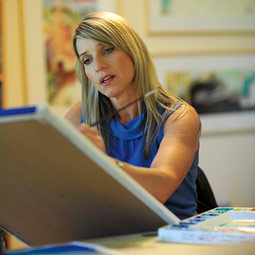 |
| Kary Lee |
Kary wrote this about herself:I wrote and illustrated my first book the summer before third grade; a pollywog pond action-adventure, with a little fantasy twist. My career began as an art director in Dallas, but something was missing. I found my way back to books through my kids. I attended my first SCBWI Conference in 2003 and realized I had ‘found my people.’ - even won a portfolio award! (who knew?) Five books and several years later I’m still at it. Two years ago I became the Illustrator Coordinator for my Northwest Region of SCBWI which has become the icing on the cake.
Growing up in Southern California in an artistic family, expression and storytelling were second nature. Instead of coloring books I was given a pad of newsprint and a huge basket of crayons. Summers were spent barefoot in a perpetual bathingsuit and lasted for about five years. On sunny days I would mix powdered tempera paints with the garden hose and use the sliding glass door as my canvas. On rainy days we would read. Laura Ingalls was my invisible friend. Raggedy Ann & Andy were my first character inspirations. Our little pollywog pond was my Narnia. And then there was Judy Blume, easing me through the tweens.
By nature, I am a story teller. It makes the rest of my world fall into place. And, I'm famous in the eyes of the local 5 year olds. Some years ago my daughters play group was discussing what their parents did for a living. “Well,” my daughter stated, “my mommy colors for a living.” Silence fell over the room. I’m
totally cool!
You can find out more about Kary and see more of her work at
www.karyleeillustration.com
Nicola Yoon grew up in Jamaica (the island) and Brooklyn (part of Long Island). She currently resides in Los Angeles with her husband and their daughter, both of whom she loves beyond all reason. Her first novel, Everything, Everything, will be published by Random House\Delacorte Press on September 1, 2015. Follow her on Twitter @nicolayoon.
Here's the synopsis of Nicola's book:
Madeline Whittier is allergic to the outside world. So allergic, in fact, that she has never left the house in all of her seventeen years. She is content enough—until a boy with eyes the color of the Atlantic Ocean moves in next door. Their complicated romance begins over IM and grows through a wunderkammer of vignettes, illustrations, charts, and more.
Highlights of Nicola's comments:
"The job of a writer is to tell the truth. To see people as they are."
Miranda asks Nicola about having a character with a serious disease, and at the same time being of mixed heritage.
"The story is about her, she's not the sidekick."
A book
about the diversity (like coming out stories) can be "incredibly important."
And, Nicola says, "a non-issue book is just as important."
"If Harry Potter were black, that would be awesome. Or if he were gay."
Nicola speaks of what happens when you have only one of a category of people.
When you have only one black or gay character, then they become representative of that category. If you have only one character who is black and they're a drug dealer, that can be problematic. But if you have ten characters who are black, it's not so troubling. Because that one character is no longer a representative of everyone who is part of that category, too.
"No one represents everyone."
Author Varian Johnson gave a
great keynote earlier today, be sure you check out the recap for that, too. As a reminder, his books include
The Great Greene Heist and
My Life as a Rhombus.
When asked about writers needing to ask permission to write about a character of a different background or orientation, etc., Varian says asking for permission is hard, it's not like one person represents the totality of their race or disability or sex. I struggle with this a lot myself, when I'm writing a female character.
Do a lot of research, get the technical things right, interactions within the community. Growing up, I spoke one way at home, and one way out in the world, and that would be hard for someone who didn't experience my private home life to observe.
I don't expect any author to ask permission, but I do expect an author to do their research and due diligence on a subject, any subject.
Miranda Paul, the moderator, asks about the term 'casual diversity' and what the panel thinks of it.
Varian says, "Casual diversity is a horrible term, we struggled with it a lot, but I think there is something to be said for books that feature the race of a character, but race isn't the point of the story. I love the idea that there are books coming out now where people of color can be more than one thing."
He mentions
Elizabeth Bluemle's post about looking for the black Ramona Quimby.
A final note of career advice from Varian: Think through who is publishing and where you and your story may fit, find your allies, they are out there.
Miranda Paul moderates the "Diversity in Children's Books: Challenges and Solutions" panel, (from left to right) Nicola Yoon, Varian Johnson, Brandy Colbert and Joe Cepeda.
(I.W. Gregorio was unable to attend.)
View Next 25 Posts





















